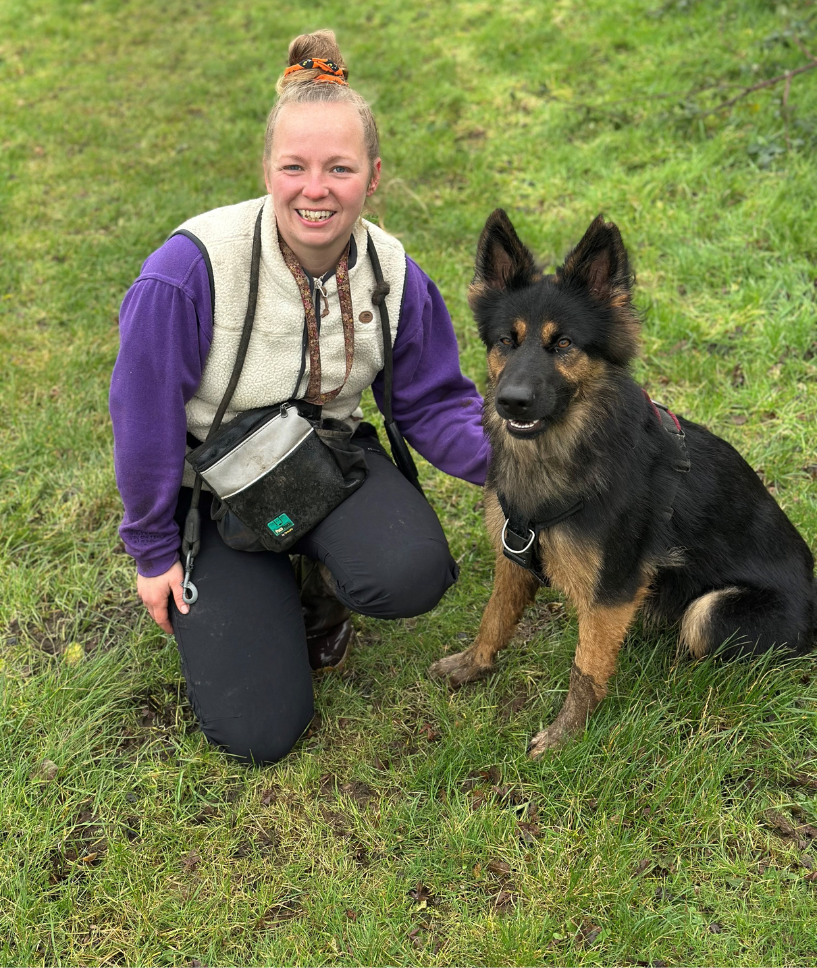The Art of Understanding the Growl
The Art of Understanding the Growl

A growling dog can be scary to experience. For that reason, as a society we can have the tendency to perceive growling as a negative behaviour that should be punished in order to put a stop it. In reality, it is a crucial form of communication from our dogs. This blog aims to explain the importance of listening to our furry friends, especially when they growl, and how understanding this communication can foster a trusting relationship between human and dogs.
The value of growling
Growling in dogs can manifest in various ways, from a subtle lip quiver to a more overt display of teeth and audible growl. This behaviour can stem from a feeling of fear, threat, the desire for personal space or even medical discomfort. It’s vital to recognise growling as a symptom of stress and not merely as a threatening or disobedient behaviour. Growling is a natural behaviour for all dogs but especially for rescue dogs with often unknown past experiences, moving into a new home can be particularly daunting, especially for ex street dogs who have previously been accustomed to a lot of freedom with minimal human contact.
The Whisper Before the Shout
Similar to humans expressing discomfort or setting boundaries with other humans, a dog’s growl serves as a whisper or warning. Punishing a dog for growling can be counterproductive, as the dog may skip the whisper and go straight in for the shout – a bite. Furthermore, when we punish a growl, we then create an even more intense negative association with the trigger, making it more likely that the dog will react negatively in future similar situations. Understanding and respecting the growl is paramount for preventing such escalations.
Managing Growling Successfully
To cultivate a trusting bond between owner and dog, it is crucial to pay attention to a dog’s growls and respond appropriately without punishment. Here are some tips on successfully managing growling.
Respect Personal Boundaries
If your dog doesn’t enjoy certain actions such as hugging, respect their personal preference and avoid such interactions.
Address Underlying Issues
Identify and address the trigger causing growling, replacing negative associations with positive outcomes. By pairing the trigger with something valuable such as food, you can create a positive emotional reaction to said trigger, for example, if your dog growls when you attempt to put their collar on you can pair your hand movement towards their neck with a yummy treat. Therefore, changing your dog’s negative feeling to a positive emotional response instead.
Distinguish Playful Growls
Not all growling is threatening; some can be playful. Observe the entire body language to distinguish between playful and threatening growls.
Enlist the Help of a Positive Reinforcement Based Behaviourist
Seeking professional help from a positive reinforcement-based dog behaviourist can provide guidance tailored to your dogs’ specific needs.
Using Positive Reinforcement Training
Positive reinforcement training means rewarding your dog with something of value when they make the right choice. For example, some dogs may growl when we try to physically manoeuvre them into a certain position or area. Instead of physically manoeuvring your dog, use food to lure and then reward when your dog is in the right place, giving the dog a sense of choice and reducing fear.
Reduce Stressors
Minimize stressors in your dog’s environment, whether it’s limiting visitors, avoiding the busy dog park or creating a safe space when guests are around.
Vet Check for Medical Conditions
When dogs are in pain or discomfort, they are much more likely to growl/react in order to create distance around them. Rule out medical issues by consulting a veterinarian.
In essence, understanding and respecting a dog’s growl is crucial for creating a happy and well-balanced companion. Punishing growling can lead to missed warnings and potentially escalate to more severe behaviours. By listening to our dogs and addressing their needs, we can harness a trusting secure relationship between human and dog built on respectful communication and mutual understanding.




